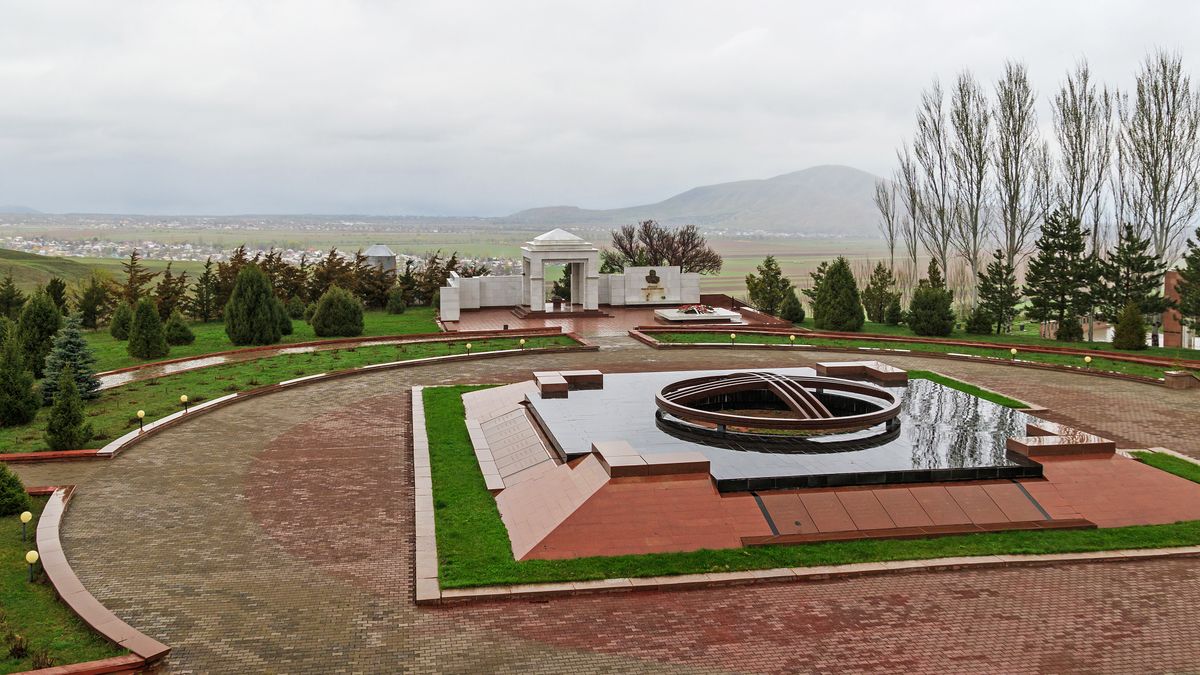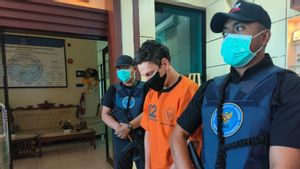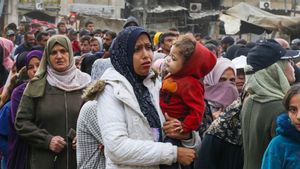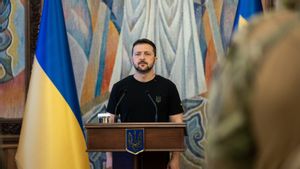JAKARTA - The name Joseph Stalin may be known as one of the figures feared by his men and opponents on the battlefield. One of the silent witnesses of the atrocities of the totalitarian regime he leads is the Ata Beyit Memorial Complex.
Located in the village of Chong-Tash, Kyrgyzstan, this historic site is 25 kilometers south of the capital Bishkek. Although it was only built in 2000 at the initiative of the first President of Kyrgyzstan, Askar Akayev, this place has a dark history dating back decades.
Back in 1924, Joseph Stalin, who was then just ruling in the Soviet Union, ordered the exile of millions of people whose fate was never known. In 1938, Stalin through the NKVD carried out 'cleaning' which was part of 'The Great Purge', the political respiration campaign that was run by Stalin in 1936-1938. The targets are national minorities to suspected intellectuals.
Two sentences await those affected by this operation, enter Gulag Prison or be executed. Among them were the architect of the Kyrgyz Latin alphabet Ksym Tynystanov, Issenali Arbayev who prepared the first Kyrgyz alphabet, the founders of the Kyrgyz state Yusup Abdrakhmanov, Bayali Isakeyev, Imanali Aydarbekov and many other intellectuals who were the targets of the Stalin regime.
For decades there has been no news, in 1991 the whereabouts of those who disappeared were slowly revealed after an administrator of the Krygyzstan SSR State Security Committee revealed the location of the mass grave to his daughter, after the Soviet Union dissolved.

A victim of Stalin's purges found in 1943 in Vinnytsia. (Source: Wikipedia Commons / Ukrainian American Youth Association)
Excavations were also carried out in Chong-Tash Village, including at the brick kiln in the village. One of the victims of the massacre that was identified there was Torekul Aitmatov, the father of Chingiz Aitmatov, a well-known figure of the Soviet Union and Kyrgyzstan.
All findings were taken to the forensic morgue for identification. From the results of archival research and DNA testing, it was found that 138 bodies, including a woman.
It is known that the victims were killed by firing two bullets into their skulls from behind when their hands were tied behind their backs. An official funeral was held for the victims on August 30, 1991, the day before Kyrgyzstan's declaration of independence.
With the participation of thousands of people and political leaders, the place where the intellectuals were buried was named the Ata Beyit Memorial Complex, at the suggestion of the world famous writer Aitmatov.
After Stalin's death, the names of all the executed Kyrgyz intellectuals, 40 of whom were statesmen and linguists, as well as people who carried out important projects in the fields of education, economy and health - were restored.
Now, Ata Beyit is one of the destinations that is crowded with local and foreign tourists who come to Kyrgyzstan. A museum built in the complex displays coins, shoes, documents, newspaper clippings, photographs and identities excavated from mass graves and biographies of the victims.
"The complex has turned into a spiritual center with visiting students, tourists and official delegations. This is an attempt to pass on the spirit of the 138 intellectuals buried here to the next generation," said Head of Ata Beyit Memorial Complex Gulnara Tursunbekova as reported by Anadolu Agency.
The English, Chinese, Japanese, Arabic, and French versions are automatically generated by the AI. So there may still be inaccuracies in translating, please always see Indonesian as our main language. (system supported by DigitalSiber.id)













